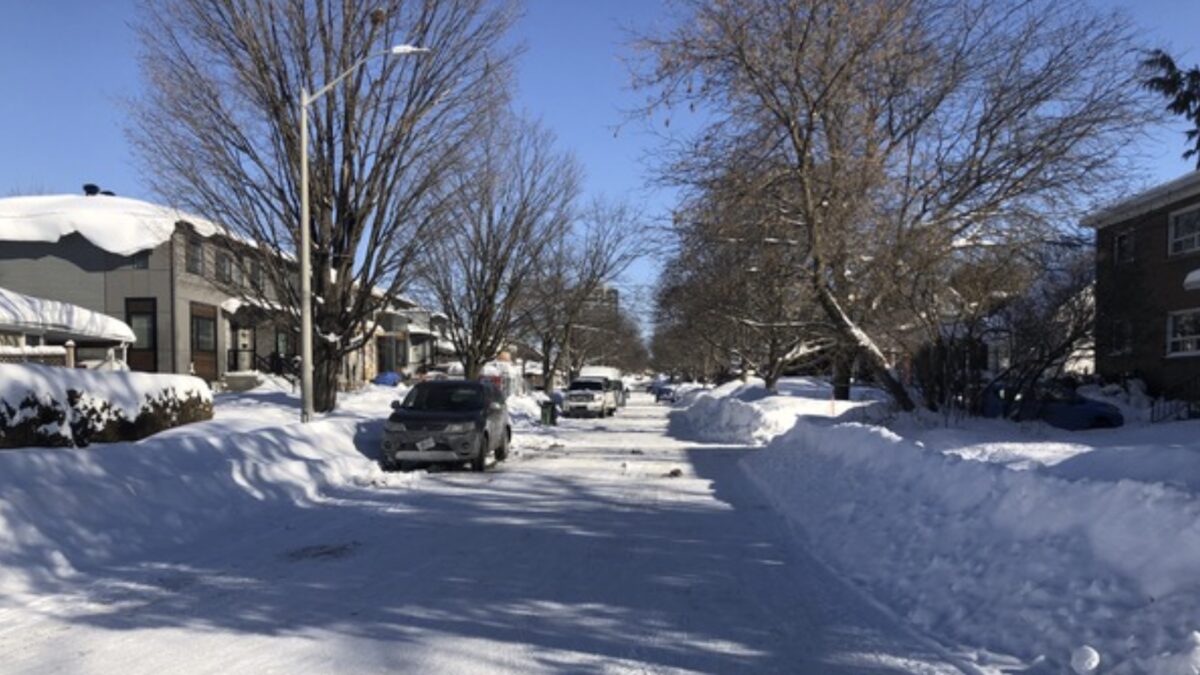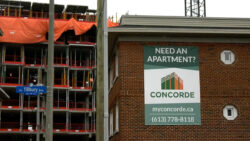Residents of Heron Park are frustrated with garbage, pest and parking problems around multi-unit residential buildings and the failure of the City of Ottawa to respond to community concerns.
Heron Park has experienced an increase in multi-storey, multi-unit buildings in recent years, and there are concerns that changes to Ottawa’s new official plan could make things worse.
The new plan expands the city’s urban boundary and permits taller structures in some built-up areas. It also allows for more four- to six-storey buildings in urban areas beyond the downtown core, including places such as Heron Park which is in Ottawa South.
The city plan wants to create “15-minute neighborhoods” — where key services would be located within walking distance of most homes — that would encourage greater urban intensification.
Heron Park community members are bracing for taller buildings with greater population density — and problems that could accompany those changes.
“On one hand, the City of Ottawa is reaching its goal of housing more people in a lot. On the other hand, it is causing externalities as a result of that policy decision,” said Susan Carbone, president of the Heron Park Community Association.


“Where there used to be three or four people (in a building), now there are 10 or 12. Where there used to be one or two cars, now there are 10 to 12 individuals, some of whom have cars but do not have parking spots. So they park on both sides of the streets.”
The parking problem has intensified in recent months, according to community members. The dilemma is there is nowhere for extra cars to park other than on the streets.
Carbone said when there are heavy snowfalls emergency vehicles, snow-blowing trucks and school buses cannot always get through.
The parking issue is just one part of a broader set of concerns for Heron Park residents.
People in the neighbourhood, which is located in the city’s Capital Ward south of Billings Bridge Shopping Centre and west of Bank Street, have noticed more rats and raccoons attracted by improper storage of garbage. Despite many complaints to the city’s bylaw department, the situation is getting worse, said Carbone.
‘On one hand, the City of Ottawa is reaching its goal of housing more people in a lot. On the other hand, it is causing externalities as a result of that policy decision.’
— Susan Carbone, president, Heron Park Community Association
“More people means more garbage,” she said. “If you get the situation in a multi-unit dwelling and do not know whose garbage is this, the bylaw gives 10 to 15 days in order to remedy the situation. By the time that period comes around, it is garbage removal day again. So the garbage stays there during the week until the next cycle,” Carbone said.
“We are welcoming everyone, but the effects of intensification have to be considered,”
Veronique Brierley, who lives in Heron Park, said the city should put restrictions and stiffer rules on developers and landlords, including better bylaws to deal with inadequate garbage containers.
“Most buildings being built are for rentals,” Brierley said. “For landlords and investors, if one parking spot is sufficient (under city regulations) and passes, that is what they going to do. It allows them to have more space and more units, and units bring money.
“Some of those investors do not even live in the city,” she said. “They care about that piece of land. They do not care about the street or neighbours.”
Brierley said she is also concerned about having more traffic and congestion because the streets were not designed for urban intensification in an area that has many children and seniors.
Capital Current shared the concerns with Carleton University Associate Professor Benjamin Gianni, whose research focuses on housing and urban development.
Gianni said the parking problem has become a major issue across the city, and several communities are grappling with the impact of too many cars in areas with increasing populations.
“The frustration the community is feeling is somehow part of the plan,” said Gianni, suggesting municipal efforts to promote public transit can involve making life more difficult and expensive for people who own cars.
“It is someway part of what the city sees as necessary to get people to start moving around in a different way,” said Gianni. “And I do not think it is realistic. Ottawa is still and will be for some time a car-oriented city.”
Gianni said that even as the city wants to push people to use public transportation, the LRT and bus systems have been plagued by problems. The transition will take many years.
“The city has basically shrugged its shoulders and said we want to introduce everyone to a new reality — and until people are getting used to that new reality, they’re not going to be happy.”
— Benjamin Gianni, professor of housing and urban history, Carleton University
“The city has basically shrugged its shoulders and said we want to introduce everyone to a new reality — and until people are getting used to that new reality, they’re not going to be happy,” Gianni said.
“The reality, however, is quite different, especially in a city with so much snow like ours.”
A spokesperson for Capital Coun. Shawn Menard acknowledged the problems being raised by the Heron Park community.
“Are we aware? Absolutely! Are we going to take practical steps? Yes, but it is hard,” said Miles Krauter, a Menard assistant who is responsible for the ward’s planning and development file.
The situation faced by Heron Park and other communities in Ottawa “is a symptom of the city planning and development plan.”
Krauter said each unit in a building should have no more than four bedrooms. But as long as the plan and framework submitted by the landlords meet the zoning regulations, they will do what they want with their properties. Some landlords also obtain modifications to the plan when getting city approvals they need to proceed with a development.
Another issue highlighted by Krauter is that “the city inspector cannot enter the property without permission from the owner.”
He added: “We believe there is a problem in the housing market. But that does not mean allowing the landlords to do whatever they want.”
Krauter said he understands why Heron Park residents are frustrated.
“If the city wants to start building trust with residents, it should start amending secondary plans as part of a public-driven process, not by a private bylaw-driven process where the interest of one developer competes with the interest of the community,” he said. “The city is taking the side of developers consistently.”
‘We believe there is a problem in the housing market. But that does not mean allowing the landlords to do whatever they want.’
— Miles Krauter, assistant to Capital Coun. Shawn Menard
Heron Park resident Jason Garlough said wealthy developers and their legal teams do not feel accountable to neighbourhood residents or city officials and create developments that do not align with the community’s needs and values.
“The plan is a bigger win for developers and investors. It claims that intensification would create affordability. The question here is, affordability for who? What we have seen so far is intensification and increase in rental prices,” Garlough said.
“If the city does not take action to ensure that there is meaningful consideration of our community members’ voices in the implementation of this official plan, it will continue to erode our community’s trust in government.”





The city is happy to have problematic parking. It’s an opportunity to write tickets and increase its revenue. The city only cares about the city.